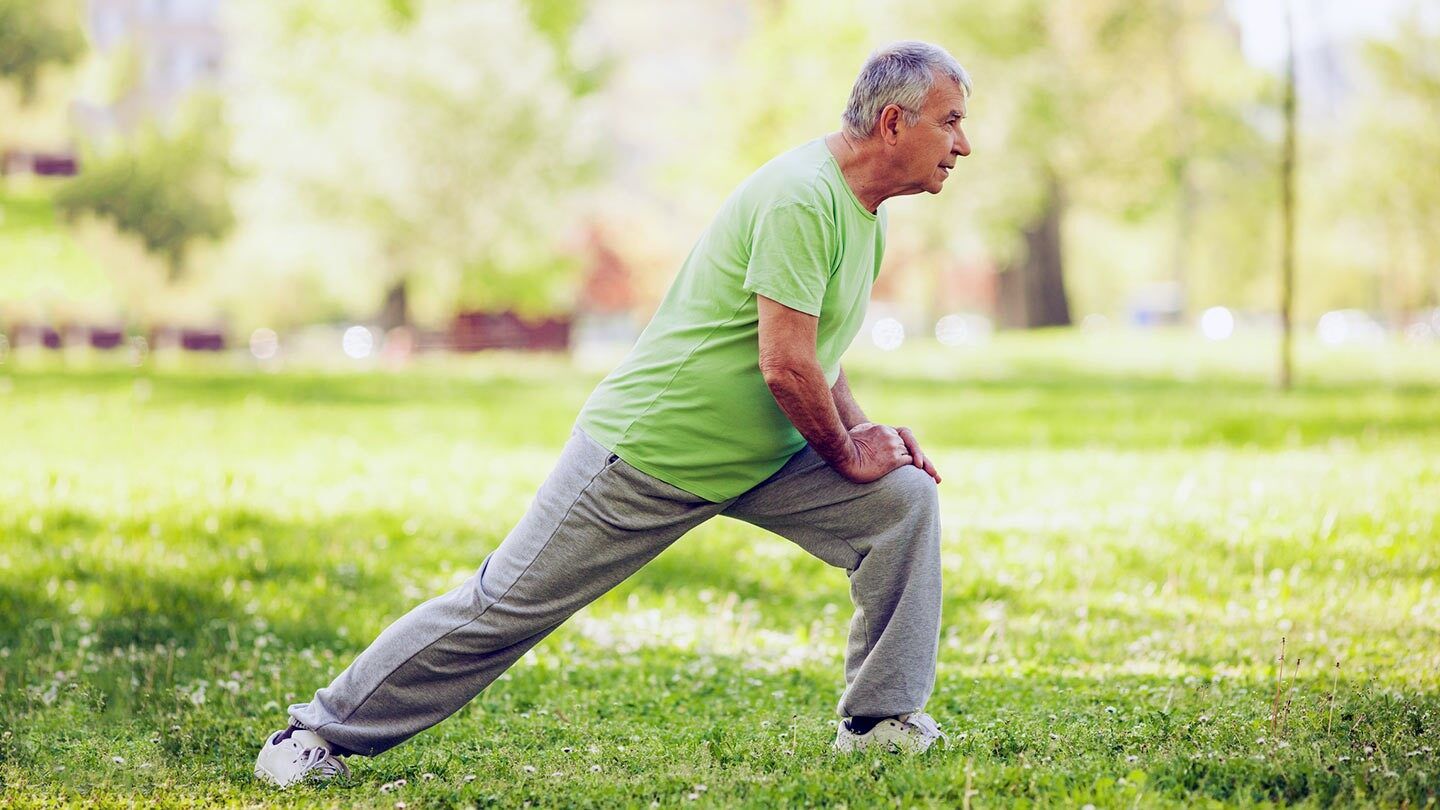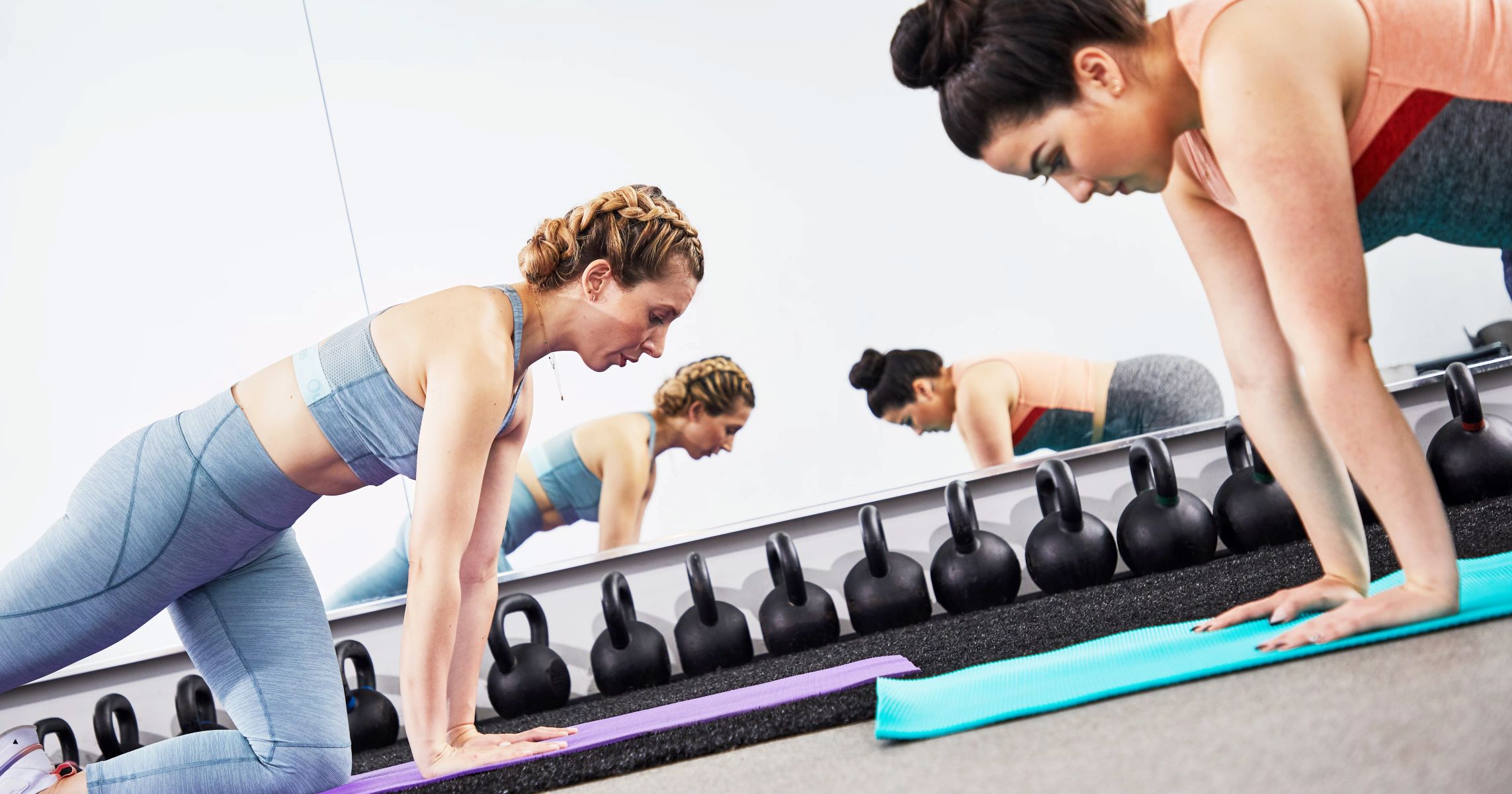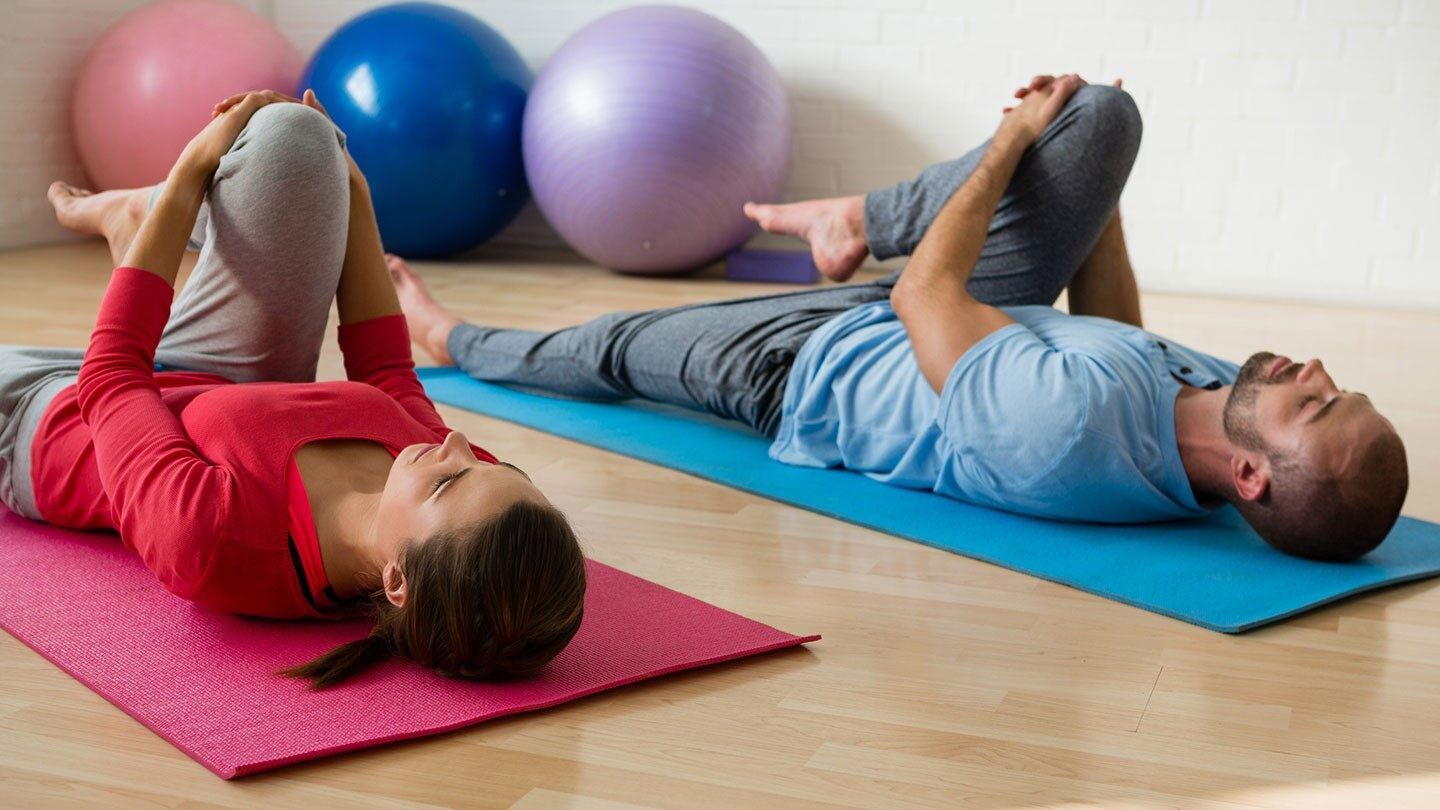

Featured
What Is The Best Exercise For Arthritis
Published: September 27, 2023
Discover the featured exercise that can help manage arthritis symptoms and improve joint mobility. Find the best exercise for arthritis and start relieving pain today!
Introduction
Arthritis is a common condition that affects millions of people worldwide. It is characterized by inflammation and stiffness in the joints, which can cause pain and limit mobility. While there is no cure for arthritis, there are various treatment options available to manage the symptoms and improve quality of life. One of the most effective ways to alleviate the discomfort of arthritis is through regular exercise.
Exercise has been proven to have numerous benefits for individuals with arthritis. It helps to strengthen the muscles around the joints, increase flexibility and range of motion, reduce pain and inflammation, and improve overall physical and mental well-being. Additionally, exercise can help individuals maintain a healthy weight, which is particularly important for those with arthritis, as excess weight can put added stress on the joints.
However, it is important to approach exercise for arthritis with caution. Each person’s experience with arthritis is unique, and what works well for one individual may not work for another. Therefore, it is crucial to consult with a healthcare professional or a physical therapist before starting an exercise routine, to ensure that it is safe and appropriate for your specific condition.
In this article, we will explore the best low-impact exercises for arthritis, as well as strength training exercises, flexibility and range of motion exercises, aerobic exercises, and water exercises that can be beneficial for individuals with arthritis. We will also provide helpful tips for exercising with arthritis to ensure a safe and enjoyable workout experience.
Understanding Arthritis
Arthritis is a term used to describe a group of conditions that primarily affect the joints. The most common types of arthritis are osteoarthritis and rheumatoid arthritis.
Osteoarthritis is the most prevalent form of arthritis and occurs when the protective cartilage that cushions the ends of the bones wears down over time, leading to painful bone-on-bone contact. It often develops as a result of aging, joint injury or trauma, obesity, or genetic factors.
Rheumatoid arthritis, on the other hand, is an autoimmune disease in which the body’s immune system mistakenly attacks the lining of the joints, causing inflammation, pain, and deterioration of the joint tissue. It can affect multiple joints throughout the body and may result in deformities and disabling symptoms if left untreated.
Common symptoms of arthritis include joint pain, stiffness, swelling, and decreased range of motion. These symptoms can vary in severity from mild to debilitating, and they may come and go or persist over time.
Arthritis can have a significant impact on an individual’s daily life, making it difficult to perform simple tasks such as walking, climbing stairs, or even holding objects. The pain and stiffness associated with arthritis can also have a negative impact on mental health, leading to feelings of frustration, anxiety, and depression.
It’s important to note that while arthritis commonly affects older adults, it can also occur in younger individuals, including children. Moreover, certain risk factors such as a family history of arthritis, previous joint injuries, obesity, and certain occupations that involve repetitive joint movements can increase the likelihood of developing arthritis.
While there is no cure for arthritis, there are various treatment approaches that can help manage symptoms and improve quality of life. These include medications, physical therapy, assistive devices, and lifestyle modifications such as regular exercise and a healthy diet.
Now that we have a basic understanding of arthritis and its impact on daily life, let’s explore the role of exercise in managing this condition and improving overall well-being.
The Impact of Exercise on Arthritis
Regular exercise can have a significant positive impact on individuals with arthritis. It offers a wide range of benefits that can help manage the symptoms, improve mobility, and enhance overall well-being.
Firstly, exercise helps to strengthen the muscles surrounding the joints. Stronger muscles provide added support and stability to the joints, reducing the stress and strain placed on them during movement. This can help to alleviate pain and increase joint function.
Exercise also improves flexibility and range of motion. When engaging in exercises that promote joint mobility, such as stretching and range of motion exercises, individuals with arthritis can experience increased joint flexibility and improved ability to perform daily tasks with ease.
Furthermore, exercise helps to manage weight. Maintaining a healthy weight is crucial for individuals with arthritis, as excess weight puts added strain on the joints, leading to increased pain and discomfort. Regular exercise, combined with a balanced diet, can aid in weight management, reducing the burden on the joints and improving overall joint health.
In addition to physical benefits, exercise also has positive effects on mental health. It can reduce stress, anxiety, and depression, all of which are common emotional challenges faced by individuals with arthritis. Engaging in physical activity releases endorphins, which are known as “feel-good” hormones, promoting a sense of well-being and improving overall mood.
Moreover, exercise has anti-inflammatory effects. It helps to reduce inflammation in the body, which is a hallmark of many forms of arthritis. By reducing inflammation, exercise can alleviate pain and stiffness, allowing individuals to move more comfortably and perform daily activities more easily.
Overall, the impact of exercise on arthritis is multi-faceted. It not only improves physical abilities, but also enhances mental well-being and helps manage weight and inflammation. By incorporating a variety of exercises into a routine, individuals with arthritis can experience significant improvement in their overall condition.
Factors to Consider Before Starting an Exercise Routine
Before starting an exercise routine for arthritis, it is important to consider a few factors to ensure a safe and effective experience. Taking these factors into account will help you tailor your exercise program to your specific needs and limitations.
1. Consult with a healthcare professional: Before embarking on any exercise regimen, it is essential to consult with your healthcare professional or a physical therapist. They can assess your specific condition, provide guidance, and recommend appropriate exercises that will be beneficial for your arthritis.
2. Understand your limitations: It is crucial to understand and respect your limitations. Arthritis affects individuals differently, and what may work for one person may not work for another. Be aware of your pain levels, joint stability, and range of motion, and choose exercises that are within your comfort zone.
3. Start slow and progress gradually: Begin your exercise routine at a pace that is comfortable for you. Start with low-impact exercises and gradually increase the intensity and duration as your strength and endurance improve. Pushing yourself too hard too quickly can lead to injury or increased joint pain.
4. Choose low-impact exercises: Low-impact exercises are gentle on the joints and provide a safe and effective way to exercise with arthritis. Walking, swimming, cycling, and yoga are all examples of low-impact exercises that can be beneficial for individuals with arthritis.
5. Use proper equipment and attire: Wearing comfortable and supportive shoes and using appropriate equipment, such as padded gloves or joint braces, can help protect your joints during exercise. Ensure that your attire allows for ease of movement and does not restrict your range of motion.
6. Listen to your body: Pay attention to how your body feels during and after exercise. If you experience increased pain or discomfort that lasts longer than 48 hours, it may be a sign that you need to modify your exercise routine or consult with a healthcare professional.
7. Schedule rest days: Allow your body time to rest and recover. Incorporate rest days into your exercise routine to avoid overexertion and give your joints a chance to heal.
By considering these factors and tailoring your exercise routine to your specific needs, you can create a safe and effective plan that will help manage your arthritis symptoms and improve your overall well-being.
Best Low-Impact Exercises for Arthritis
Engaging in low-impact exercises is an excellent way to exercise with arthritis, as they are gentle on the joints while still providing numerous health benefits. Here are some of the best low-impact exercises for arthritis:
- Walking: Walking is a simple and effective exercise that can be easily incorporated into daily routines. It helps to strengthen the muscles, improve cardiovascular health, and increase joint flexibility. Start with short walks and gradually increase the duration as your fitness level improves.
- Swimming: Swimming and water aerobics are ideal for individuals with arthritis, as the buoyancy of water reduces the impact on the joints. The water also provides resistance, helping to build muscle strength and improve flexibility. Consider joining a water exercise class or swimming laps to reap the benefits.
- Cycling: Cycling, whether on a stationary bike or outdoors, is a low-impact exercise that puts minimal stress on the joints. It helps build leg strength and improves cardiovascular fitness. Adjust the resistance and duration based on your comfort level and gradually increase as your endurance improves.
- Yoga: Yoga combines gentle stretching, strengthening, and relaxation techniques. It promotes flexibility, balance, and mindfulness, which can be beneficial for individuals with arthritis. Look for classes specifically designed for arthritis or practice gentle yoga poses at home to improve joint mobility.
- Tai Chi: Tai Chi is a gentle martial art that involves slow, flowing movements and deep breathing. It helps improve balance, flexibility, and overall coordination. Tai Chi classes taught by certified instructors can be found in many community centers and fitness facilities.
- Pilates: Pilates focuses on strengthening the core muscles, improving posture, and increasing flexibility. It is a low-impact exercise that targets multiple muscle groups without putting excessive stress on the joints. Consider joining a Pilates class or following online videos specifically designed for individuals with arthritis.
These low-impact exercises can be incorporated into your daily routine to help manage arthritis symptoms, improve joint function, and enhance overall fitness. Remember to start with shorter durations and gradually increase as you become more comfortable and confident in your abilities. It is always recommended to consult with a healthcare professional or a physical therapist before starting any new exercise program.
Strength Training Exercises for Arthritis
Strength training exercises are an essential component of an exercise routine for individuals with arthritis. While it may seem counterintuitive to engage in strength training when dealing with joint pain and stiffness, these exercises can actually help improve joint stability, decrease pain, and enhance overall function. Here are some strength training exercises that are beneficial for arthritis:
- Bodyweight exercises: Bodyweight exercises, such as squats, lunges, and push-ups, are effective for building strength without the need for equipment. These exercises target multiple muscle groups and help improve overall joint function. Start with modified versions of these exercises if needed, and gradually progress to more challenging variations.
- Resistance band exercises: Resistance bands are versatile and can be used to target various muscle groups. They provide resistance throughout the entire range of motion, helping to strengthen muscles without putting excessive strain on the joints. Exercises such as bicep curls, shoulder presses, and leg extensions can be performed using resistance bands.
- Weight machines: Weight machines at the gym can be useful for arthritis patients as they provide controlled movements and support during exercises. Machines can target specific muscles and allow for easier progression in resistance. Work with a qualified trainer to ensure proper form and use of the machines.
- Dumbbell exercises: Dumbbells can be used to perform a wide range of strength training exercises. They offer versatility and allow for increased resistance as strength improves. Exercises like dumbbell rows, chest presses, and overhead presses can help strengthen upper body muscles.
- Isometric exercises: Isometric exercises involve contracting and holding specific muscles without joint movement. These exercises can help build strength and stability in the muscles without placing stress on the joints. Examples include wall sits, planks, and static bicep curls.
When engaging in strength training exercises, it is important to start with lighter weights or resistance and gradually increase as you become stronger. Listen to your body and avoid pushing through pain. If you experience joint pain or discomfort that lasts longer than 48 hours, reduce the intensity or consult with a healthcare professional.
Strength training should be performed as part of a well-rounded exercise program that also includes cardiovascular exercises, flexibility exercises, and rest days. By incorporating strength training into your routine, you can improve muscle strength, joint stability, and overall physical function, leading to better management of arthritis symptoms.
Flexibility and Range of Motion Exercises for Arthritis
Flexibility and range of motion exercises are crucial for individuals with arthritis as they help improve joint mobility, reduce stiffness, and increase overall flexibility. By regularly incorporating these exercises into your routine, you can enhance joint function and better manage arthritis symptoms. Here are some examples of flexibility and range of motion exercises for arthritis:
- Stretching exercises: Stretching exercises can help increase joint flexibility and improve muscle elasticity. Focus on stretches that target the specific joints affected by arthritis. Gentle stretches for the neck, shoulders, wrists, hips, knees, and ankles can provide relief and improve overall range of motion. Hold each stretch for 15-30 seconds, without bouncing or jerking, and repeat several times on each side.
- Yoga: Practicing yoga regularly can be highly effective for individuals with arthritis. Yoga poses help improve flexibility, balance, and strength while promoting relaxation. Look for gentle yoga classes or online videos specifically tailored for people with arthritis.
- Pilates: Pilates exercises focus on core strength, stability, and flexibility. The controlled movements and emphasis on proper alignment can improve joint range of motion and promote balance. Look for Pilates classes or instructional videos that cater to individuals with arthritis.
- Tai Chi: Tai Chi combines slow, flowing movements with deep breathing and meditation. It helps improve balance, flexibility, and joint mobility. Tai Chi classes designed for people with arthritis are available in many community centers and fitness facilities.
- Range of motion exercises: These exercises involve moving a joint through its full range of motion. Perform exercises such as shoulder rolls, wrist curls, ankle circles, and knee bends to help maintain or improve joint flexibility.
Remember to start each exercise slowly and gently and never force a joint beyond its comfortable range of motion. If you experience pain or discomfort, reduce the intensity or range of the exercise. Regularly performing flexibility and range of motion exercises, in combination with other types of exercises, can help reduce stiffness, increase joint mobility, and enhance overall function.
Consult with a healthcare professional or a physical therapist for guidance on the specific flexibility and range of motion exercises that are appropriate for your condition. They can provide personalized recommendations and modifications based on your individual needs and limitations.
Aerobic Exercises for Arthritis
Aerobic exercises, also known as cardiovascular exercises, are an essential component of an exercise routine for individuals with arthritis. These exercises help improve cardiovascular health, increase endurance, and provide numerous benefits for managing arthritis symptoms. Here are some examples of aerobic exercises that are particularly beneficial for arthritis:
- Walking: Walking is a low-impact aerobic exercise that can be done almost anywhere. It helps build stamina, strengthen the muscles, and improve cardiovascular fitness. Start with shorter durations and gradually increase your walking time as your fitness level improves.
- Swimming: Swimming and water aerobics are excellent choices for individuals with arthritis due to the buoyancy of water, which reduces the impact on the joints. Swimming laps or participating in water aerobics classes can provide a full-body workout while minimizing stress on the joints.
- Cycling: Cycling, whether outdoors or using a stationary bike, is a great aerobic exercise option for individuals with arthritis. It helps strengthen leg muscles, improve cardiovascular health, and reduce stress on the joints. Adjust the intensity and duration to your comfort level and gradually increase as you build stamina.
- Dancing: Dancing is a fun and enjoyable way to get your heart rate up and improve aerobic fitness. Whether it’s attending dance classes or simply dancing at home, moving to music can boost your mood and overall fitness level. Choose dance styles that are low-impact, such as salsa, ballroom, or Zumba.
- Elliptical workouts: Using an elliptical machine provides a low-impact, full-body workout that targets multiple muscle groups. This exercise helps improve cardiovascular fitness without putting excessive strain on the joints. Start with shorter durations and gradually increase as you build endurance.
When performing aerobic exercises, it’s important to start slowly and gradually increase intensity and duration over time. Listen to your body and adjust the intensity or take breaks when needed. Aim for at least 150 minutes of moderate-intensity aerobic exercise per week, or 75 minutes of vigorous-intensity exercise, spread throughout the week.
Consult with a healthcare professional or a physical therapist to determine the appropriate level of intensity for your individual condition. They can provide guidance on modifications and help tailor an aerobic exercise plan specifically for your needs and goals.
By regularly incorporating aerobic exercises into your routine, you can improve cardiovascular health, increase endurance, and better manage symptoms associated with arthritis.
Water Exercises for Arthritis
Water exercises, also known as aquatic exercises or hydrotherapy, can be highly beneficial for individuals with arthritis. Exercising in water provides a low-impact environment that reduces stress on the joints, allowing for a comfortable and effective workout. Here are some water exercises that can help manage arthritis symptoms:
- Water walking: Walking in water is a great aerobic exercise that provides resistance to strengthen muscles. Walking in waist-deep water can reduce the impact on the joints while still providing a challenging workout. Consider using water shoes for added grip and stability.
- Water aerobics: Water aerobics classes offer a structured workout that combines cardiovascular exercises with resistance training. The buoyancy of water supports the body and reduces the strain on joints, making it an ideal option for individuals with arthritis. These classes typically include a variety of exercises, such as jogging, jumping jacks, and arm movements.
- Water cycling: Many pools now offer stationary bikes specially designed for use in the water. Water cycling provides a low-impact, high-intensity workout that targets the lower body while minimizing stress on the joints. It helps strengthen leg muscles and improve cardiovascular fitness.
- Water yoga or water tai chi: These modified versions of land-based yoga and tai chi involve performing gentle movements and stretches in the water. The water provides resistance, helping to improve strength, flexibility, and balance. These exercises can be particularly beneficial for individuals with arthritis as they reduce joint stress while still providing the benefits of land-based practices.
- Swimming laps: Swimming laps is an excellent full-body workout that is gentle on the joints. It helps improve cardiovascular fitness, builds muscle strength, and enhances flexibility. Vary your strokes and intensity to work different muscle groups and maximize the benefits.
When performing water exercises, it is important to maintain proper form and posture. Listen to your body and work within your comfort level. Start with shorter durations and gradually increase the intensity and duration as your fitness level improves.
Consult with a healthcare professional or a physical therapist to determine the appropriate water exercises for your individual needs. They can provide guidance on modifications and help tailor an aquatic exercise program specifically for your condition.
Water exercises offer a refreshing and enjoyable way to manage arthritis symptoms while providing numerous health benefits. By incorporating water-based exercises into your routine, you can improve joint mobility, muscle strength, and overall well-being.
Tips for Exercising with Arthritis
Exercising with arthritis requires some careful considerations to ensure a safe and effective workout. By following these helpful tips, you can make the most of your exercise routine and effectively manage your arthritis symptoms:
- Consult with a healthcare professional: Before starting any exercise program, it is crucial to consult with your healthcare professional or a physical therapist. They can provide personalized advice, assess your condition, and recommend suitable exercises based on your specific needs and limitations.
- Warm up before exercising: Prior to engaging in any physical activity, it is essential to warm up your muscles and joints. Perform gentle stretches or do some light cardio exercises to increase blood flow and prepare your body for activity.
- Start low and slow: Begin your exercise routine at a pace that is comfortable for you. Start with lower intensity exercises and shorter durations. Gradually increase the intensity, duration, and complexity of your workouts as your body adapts and becomes stronger.
- Listen to your body: Pay attention to your body’s signals. If you experience increased pain during or after exercising, modify the activity or take a break. It’s important to strike a balance between pushing yourself and avoiding excessive strain on your joints.
- Use proper techniques: When performing exercises, use correct form and technique. This will ensure that you are targeting the appropriate muscles and joints and reduce the risk of injury. If necessary, work with a qualified trainer or physical therapist to learn proper techniques for your chosen exercises.
- Alternate exercise types: Vary your exercise routine to work different muscle groups and reduce repetitive stress on specific joints. For example, alternate between cardiovascular exercises, strength training, flexibility exercises, and water-based workouts to achieve a well-rounded routine.
- Take rest days: Rest days are just as important as exercise days. Allow your body time to recover and repair itself. This will help prevent overuse injuries and optimize the benefits of your exercise program.
- Use assistive devices if needed: If you require assistance or support during exercise, consider using assistive devices such as braces, supports, or joint-friendly equipment. These can help provide stability and reduce stress on affected joints.
- Stay hydrated: Drink plenty of water before, during, and after exercising to stay hydrated. Proper hydration is essential for joint health and overall well-being.
- Listen to your mental health: Exercise not only benefits your physical health but also has positive effects on mental well-being. It can help reduce stress, anxiety, and depression. If you are feeling overwhelmed, consider incorporating mindfulness techniques or activities that you enjoy into your routine.
Remember, everyone’s experience with arthritis is unique. It’s essential to find what works best for you and your body. By following these tips and working closely with a healthcare professional, you can create a safe and effective exercise routine that helps manage your arthritis symptoms and improves your overall quality of life.
Conclusion
Exercise plays a vital role in managing arthritis by improving muscle strength, joint flexibility, and overall physical and mental well-being. It helps reduce pain, inflammation, and stiffness while enhancing joint stability and function. By incorporating a variety of low-impact exercises, strength training, flexibility and range of motion exercises, aerobic exercises, and water exercises into a well-rounded exercise routine, individuals with arthritis can experience significant improvements in their daily lives.
Before starting any exercise program, it is crucial to consult with a healthcare professional or a physical therapist who can provide personalized guidance and recommend appropriate exercises based on individual needs and limitations. They can help ensure that the chosen exercises are safe, effective, and tailored to specific arthritis conditions.
Remember to start slowly, gradually increase intensity and duration, and listen to your body. It’s important to find a balance between challenging yourself and avoiding undue stress on the joints. Incorporating rest days, using proper techniques, and paying attention to your mental health are also key aspects of a successful exercise routine.
Overall, exercising with arthritis offers numerous benefits that can greatly improve quality of life. By incorporating exercise into your daily routine, you can better manage arthritis symptoms, reduce pain and stiffness, enhance joint mobility, and enjoy a better sense of overall well-being. With the right approach and guidance, exercise can become an empowering and enjoyable part of your arthritis management plan.









